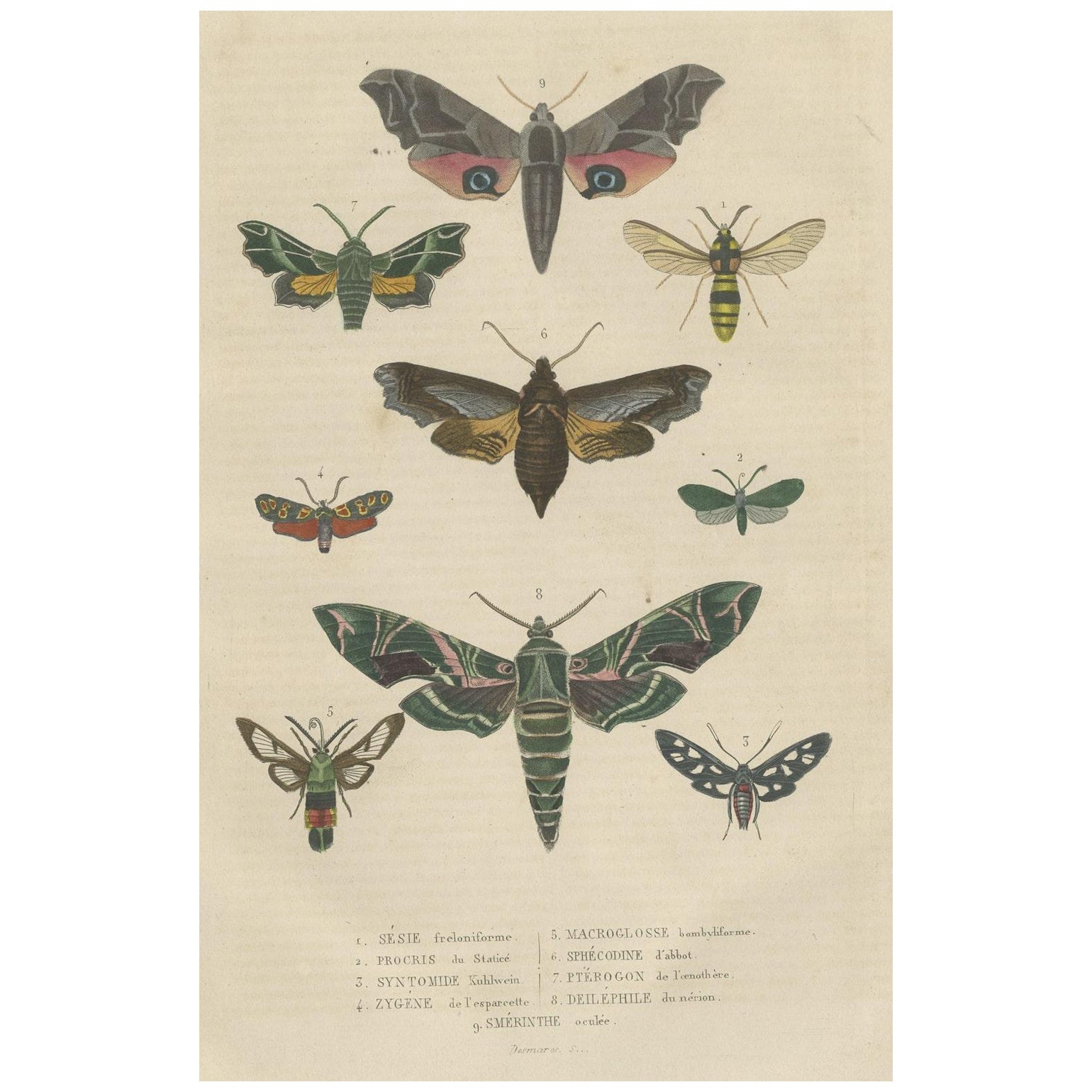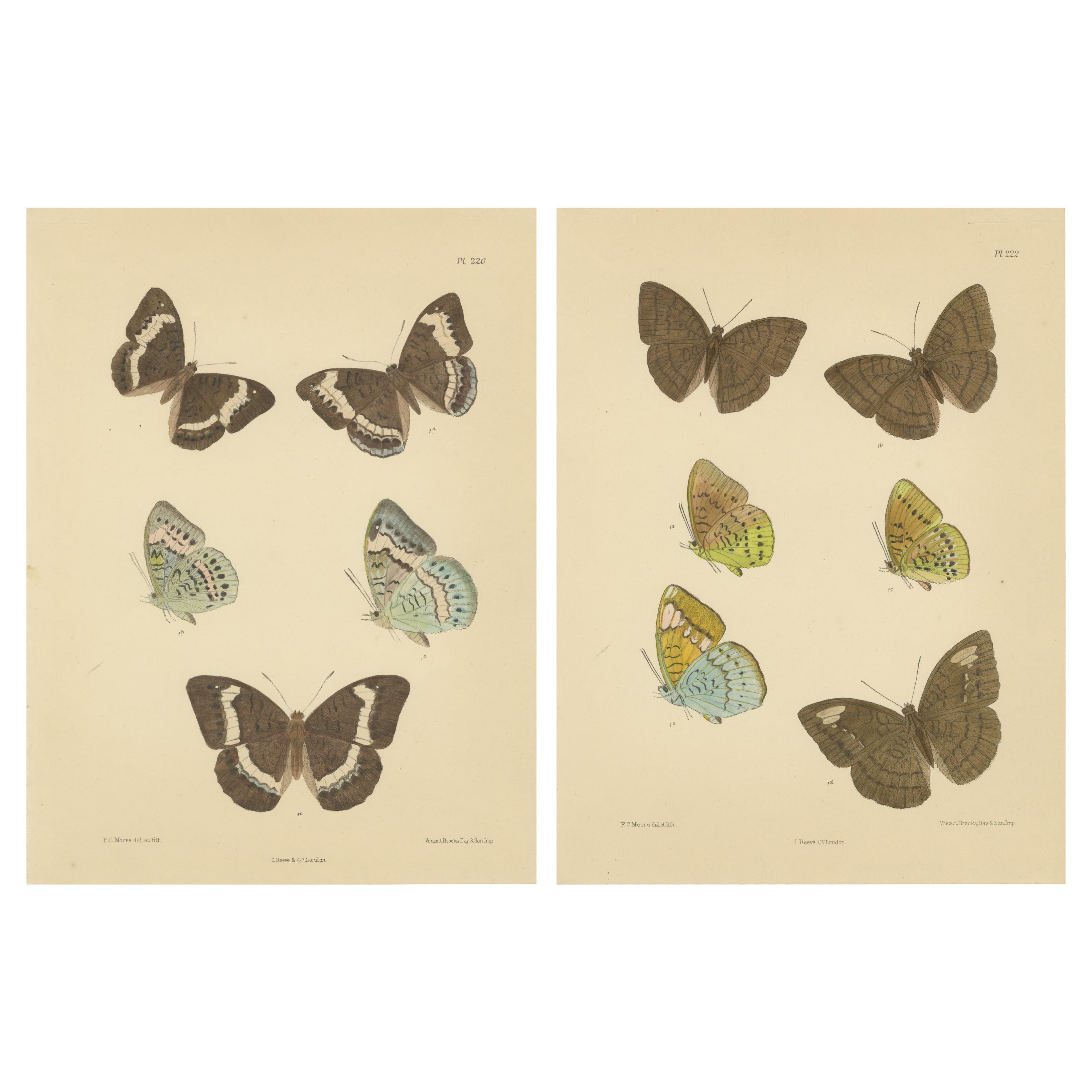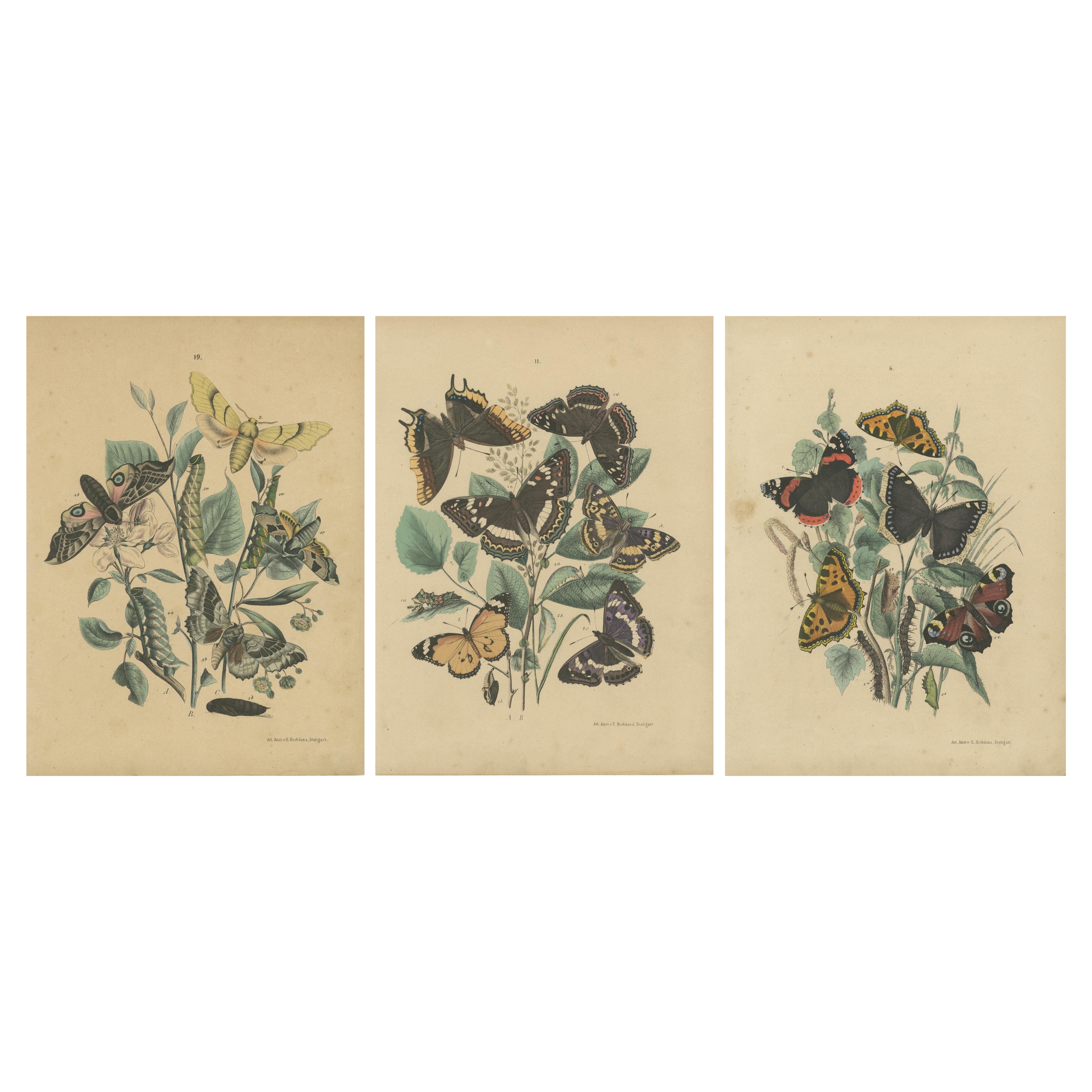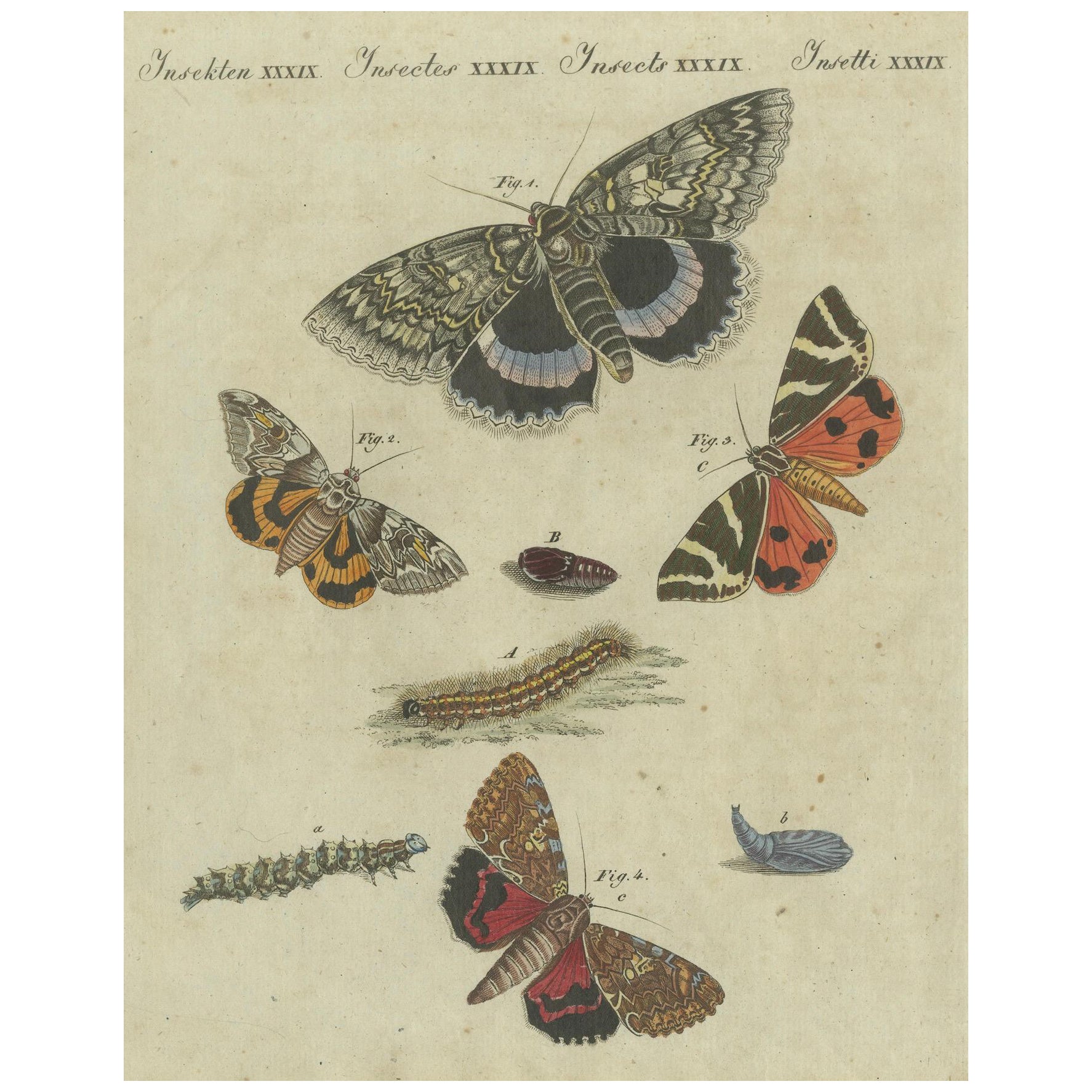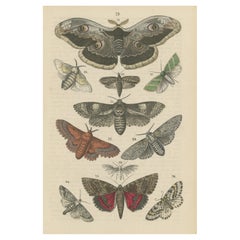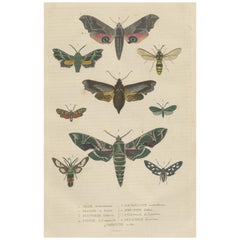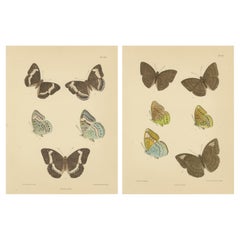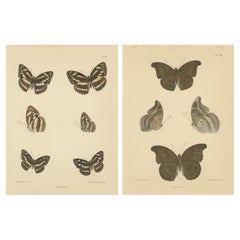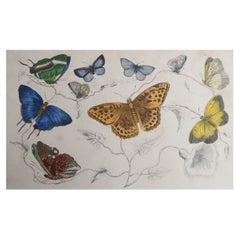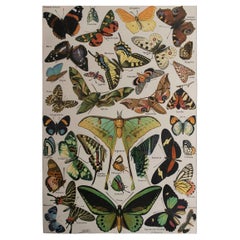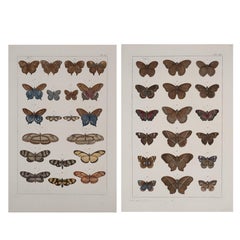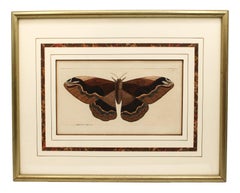Items Similar to Transcending Time: Urania Prometheus, A Lepidopteral Legacy - Circa 1845
Want more images or videos?
Request additional images or videos from the seller
1 of 6
Transcending Time: Urania Prometheus, A Lepidopteral Legacy - Circa 1845
$254.58
$318.2320% Off
£191.75
£239.6920% Off
€216
€27020% Off
CA$351.08
CA$438.8520% Off
A$394.42
A$493.0320% Off
CHF 206.09
CHF 257.6120% Off
MX$4,814.12
MX$6,017.6420% Off
NOK 2,616.70
NOK 3,270.8720% Off
SEK 2,463.07
SEK 3,078.8420% Off
DKK 1,644.11
DKK 2,055.1420% Off
About the Item
This original antique print of the butterfly "Urania prometheus" is a detailed illustration that served as a plate in "Dictionnaire Classique des Sciences Naturelles" by Pierre Auguste Joseph Drapiez. The "Dictionnaire Classique des Sciences Naturelles" was a comprehensive work that provided detailed descriptions and illustrations of the natural world, encompassing various species of plants, animals, and minerals known at the time.
Given the era and the scientific nature of the work, this print would have been one of many intended to educate and inform readers about the vast diversity of life. The meticulous detail in the engraving suggests that it was designed not only to be visually impressive but also to serve as a scientific tool for identification and study.
The hand-coloring of the print indicates that it was likely colored by an artist after printing, which was a common practice in the production of high-quality scientific books in the 19th century. The condition of the print, showing signs of aging and wear, tells us that it has been well-studied and has survived the passage of time, preserving a visual record from Drapiez's influential publication.
The Urania genus of butterflies, particularly known for the Urania leilus and Urania ripheus species, are typically found in tropical regions. Urania leilus is native to Central and South America, while Urania ripheus, also known as the Madagascar sunset moth, is indigenous to the island of Madagascar.
They inhabit rainforests and are often seen in clearings and along riverbanks where their host plants grow. These butterflies are diurnal and are known for their iridescent wing colors and distinctive flight patterns. The specific habitat of "Urania prometheus" would depend on the precise species, but given the tropical nature of the Urania genus, it is likely found in similar environments.
The print is a typical representation of entomological studies from the 18th and 19th centuries, where detailed illustrations were crucial for the study and classification of animals. The style suggests it may have been created for a scientific book or collection. The labels are in French, and the terms used may be either outdated or using older nomenclature, as common names and scientific understanding of these species have evolved.
This print not only serves as a scientific record but also as a work of art, reflecting the dual interests of the Victorian era in both natural history and illustration. It is a remarkable piece that would be a significant addition to any collection of natural history art or an elegant decorative piece for those with a taste for the historic and the natural world.
The style of the illustration is reminiscent of 19th-century scientific prints, which were often used in natural history books to document various species.
More info on the book in which it was published:
The 'Dictionnaire Classique des Sciences Naturelles' by Pierre Auguste Joseph Drapiez stands as a remarkable testament to 19th-century natural sciences. Published in Brussels in 1845, this work represents an expansive collation of knowledge, building upon the pioneering works of Buffon, Daubenton, Lacepede, Cuvier, de Jussieu, and other influential naturalists.
The prints within this compendium likely showcase a rich amalgamation of artistic precision and scientific accuracy. Drapiez, himself a Belgian naturalist, would have aimed for detailed representations of flora, fauna, and scientific phenomena, mirroring the illustrative styles prevalent during his time. Given the era's emphasis on illustration, these prints were likely engraved meticulously, possibly portraying intricate anatomical details or lifelike depictions of the natural world.
With Drapiez's background in natural history, the prints might bear testament to his commitment to scientific authenticity, aiming to educate and inspire scholars and enthusiasts alike. These engravings would have complemented the text, offering visual aids that elucidate the concepts and specimens discussed in the volume.
Overall, the prints of 'Dictionnaire Classique des Sciences Naturelles' likely serve as both artistic representations and invaluable scientific resources, encapsulating the essence of 19th-century natural history exploration and documentation.
- Dimensions:Height: 10.44 in (26.5 cm)Width: 6.7 in (17 cm)Depth: 0 in (0.02 mm)
- Materials and Techniques:Paper,Engraved
- Period:
- Date of Manufacture:1845
- Condition:Condition: Good. Overal toning but heavier foxing in the top right corner. The images itself clean and hand-colored in expliciet colors. Light offset from a opposite text plate in the original book. Please study scan carefully.
- Seller Location:Langweer, NL
- Reference Number:Seller: BG-13261-741stDibs: LU3054337751182
About the Seller
5.0
Recognized Seller
These prestigious sellers are industry leaders and represent the highest echelon for item quality and design.
Platinum Seller
Premium sellers with a 4.7+ rating and 24-hour response times
Established in 2009
1stDibs seller since 2017
2,533 sales on 1stDibs
Typical response time: <1 hour
- ShippingRetrieving quote...Shipping from: Langweer, Netherlands
- Return Policy
Authenticity Guarantee
In the unlikely event there’s an issue with an item’s authenticity, contact us within 1 year for a full refund. DetailsMoney-Back Guarantee
If your item is not as described, is damaged in transit, or does not arrive, contact us within 7 days for a full refund. Details24-Hour Cancellation
You have a 24-hour grace period in which to reconsider your purchase, with no questions asked.Vetted Professional Sellers
Our world-class sellers must adhere to strict standards for service and quality, maintaining the integrity of our listings.Price-Match Guarantee
If you find that a seller listed the same item for a lower price elsewhere, we’ll match it.Trusted Global Delivery
Our best-in-class carrier network provides specialized shipping options worldwide, including custom delivery.More From This Seller
View AllA Study in Wings: Hand-Colored Lepidoptera of the Mid-19th Century
Located in Langweer, NL
A hand-colored illustration of various insect species, created around 1866.
Th print is potentially part of a publication by W. G. Sebald, a well-known German writer, also known as Max Sebald. He was an avid collector of art and had an interest in natural history.
Specific types of moths and butterflies projected:
Emperor Moth (Saturnia pavonia): Typically, this moth has a distinctive eye pattern...
Category
Antique Late 19th Century Prints
Materials
Paper
$94 Sale Price
20% Off
19th Century Lepidoptera: An Illustrated Compendium of Moths and Butterflies
Located in Langweer, NL
An antique hand-colored engraving. This particular illustration focuses on various moth and butterfly species, showcasing their wing patterns and body shapes in vibrant colors and with a high level of detail.
The different specimens are numbered and named at the bottom, likely corresponding to their scientific names, which are partially legible and written in French. These include various types of moths and butterflies with distinct markings, such as eye-like spots on their wings, which are often used in nature as a form of mimicry or to ward off predators.
The artistic style is consistent with scientific illustrations of the 19th century, aimed at providing an accurate representation of the insects for study and reference. The paper shows signs of aging, indicating the historical value of the print. This type of illustration would have been a vital educational tool at the time, combining scientific interest with an appreciation for the beauty of these creatures. The illustrator has captured both the structural and aesthetic qualities of the insects, which would have been important for both scientific taxonomy and for those with a general interest in natural history.
The image appears to be a caption section from an antique hand-colored engraving, listing the names of various moth and butterfly species. The names are in French and are likely to correspond to the illustrations of the specimens on the main engraving. Here's the list of the species with a description based on the names provided:
1. **SÉSIE freloniforme**: This is likely a species of clearwing moth, which mimics the appearance of a hornet or wasp (hence "freloniforme", resembling a hornet). Clearwing moths are known for their transparent wings and mimicry for defense against predators.
2. **PROCRIS du Statice**: This could refer to a species of moth or butterfly associated with sea-lavender plants...
Category
Antique 1840s Prints
Materials
Paper
$254 Sale Price
20% Off
Free Shipping
Vibrant Victorian Butterfly Lithographs: Delicate Portraits by Frederic C. Moore
Located in Langweer, NL
Vibrant Victorian Butterfly Lithographs: Delicate Portraits by Frederic C. Moore
This remarkable pair of lithographs, created by Frederic C. Moo...
Category
Antique 1870s Prints
Materials
Paper
$245 Sale Price / set
20% Off
Victorian Butterfly Wonders: Stunning Hand-Colored Lithographs, 1878
Located in Langweer, NL
Victorian Butterfly Wonders: Stunning Hand-Colored Lithographs by Frederic C. Moore and J. Nugent Fitch
Description: This exquisite collection of lithographs from 1878 features the...
Category
Antique 1870s Prints
Materials
Paper
$245 Sale Price / set
20% Off
Exquisite 19th-Century Butterfly Lithographs: A Study of Exotic Lepidoptera
Located in Langweer, NL
Exquisite 19th-Century Butterfly Lithographs: A Study of Exotic Lepidoptera by F. Hochmanz, Stuttgart
This stunning compilation of 19th-century lithographs beautifully captures the ...
Category
Antique 1860s Prints
Materials
Paper
$179 Sale Price / set
20% Off
Vivid Lepidoptera: Hand-Colored 18th-Century Butterfly and Moth Studies
Located in Langweer, NL
This exquisite hand-colored copperplate engraving from Friedrich Johann Bertuch's renowned "Bilderbuch für Kinder" (Picture Book for Children), published in Weimar in 1805, presents ...
Category
Antique Early 1800s Prints
Materials
Paper
You May Also Like
Original Antique Print of Butterflies, 1847, Unframed
Located in St Annes, Lancashire
Great image of butterflies.
Unframed. It gives you the option of perhaps making a set up using your own choice of frames.
Lithograph after Cpt. brown with original hand color.
Pub...
Category
Antique 1840s English Folk Art Prints
Materials
Paper
Original Vintage Print of Butterflies. French, C.1920
Located in St Annes, Lancashire
Great image of butterflies
Unframed. It gives you the option of perhaps making a set up using your own choice of frames.
Chromo-lithograph
Published, C.1920
Free shipping.
Category
Vintage 1920s French Folk Art Prints
Materials
Paper
Antique Albertus Seba Pair 18th Century Hand-Colored Engravings Butterfly
By Albertus Seba 1
Located in Washington, DC
Rare pair of original hand-colored prints from Sir Albertus Seba's cabinet of natural curiosities. Prints come from published volumes in Amste...
Category
Antique Mid-18th Century Dutch Prints
Materials
Paper
"Phalaena Sylla" Engraving by Frederick Polydore Nodder
By Frederick Polydore Nodder
Located in Chapel Hill, NC
Hand colored engraving of 1805 by Frederick Polydore Nodder, the "Phalaena Sylla", plate 669. For George Shaw's "The Naturalist's Miscellany" together with descriptive pages by Shaw....
Category
Antique Early 1800s Other Prints
Materials
Paper
$240 Sale Price
20% Off
Moths, English antique natural history Lepidoptera insect chromolithograph print
Located in Melbourne, Victoria
English moth chromolithograph, circa 1900. Plate number top right. From an English series of illustrations of butterflies and moths. Butterflies / moths are numbered and there is an ...
Category
Early 1900s Art Nouveau Animal Prints
Materials
Lithograph
Moths, English antique natural history Lepidoptera chromolithograph print
Located in Melbourne, Victoria
English moth chromolithograph, circa 1900. Plate number top right. From an English series of illustrations of butterflies and moths. Butterflies / moths are numbered and there is an ...
Category
Early 1900s Art Nouveau Animal Prints
Materials
Lithograph
More Ways To Browse
Spanish Colonial Plates
Specimen Chest
Steel Guitar
Syria Jewelry
Tall Mid Century Modern Buffet
Tall Narrow Shelves
Tamil Nadu
Terracotta Sink
Thai Bamboo
Thai Dragons
Thai Statue Wood
Tibetan Buddha Statue
Tiffany Glass Mirror
Tin Horse
Tubular Chrome Shelf
Unglazed Clay Jar
Used Metal Storage Bins
Vaseline Uranium Glass

